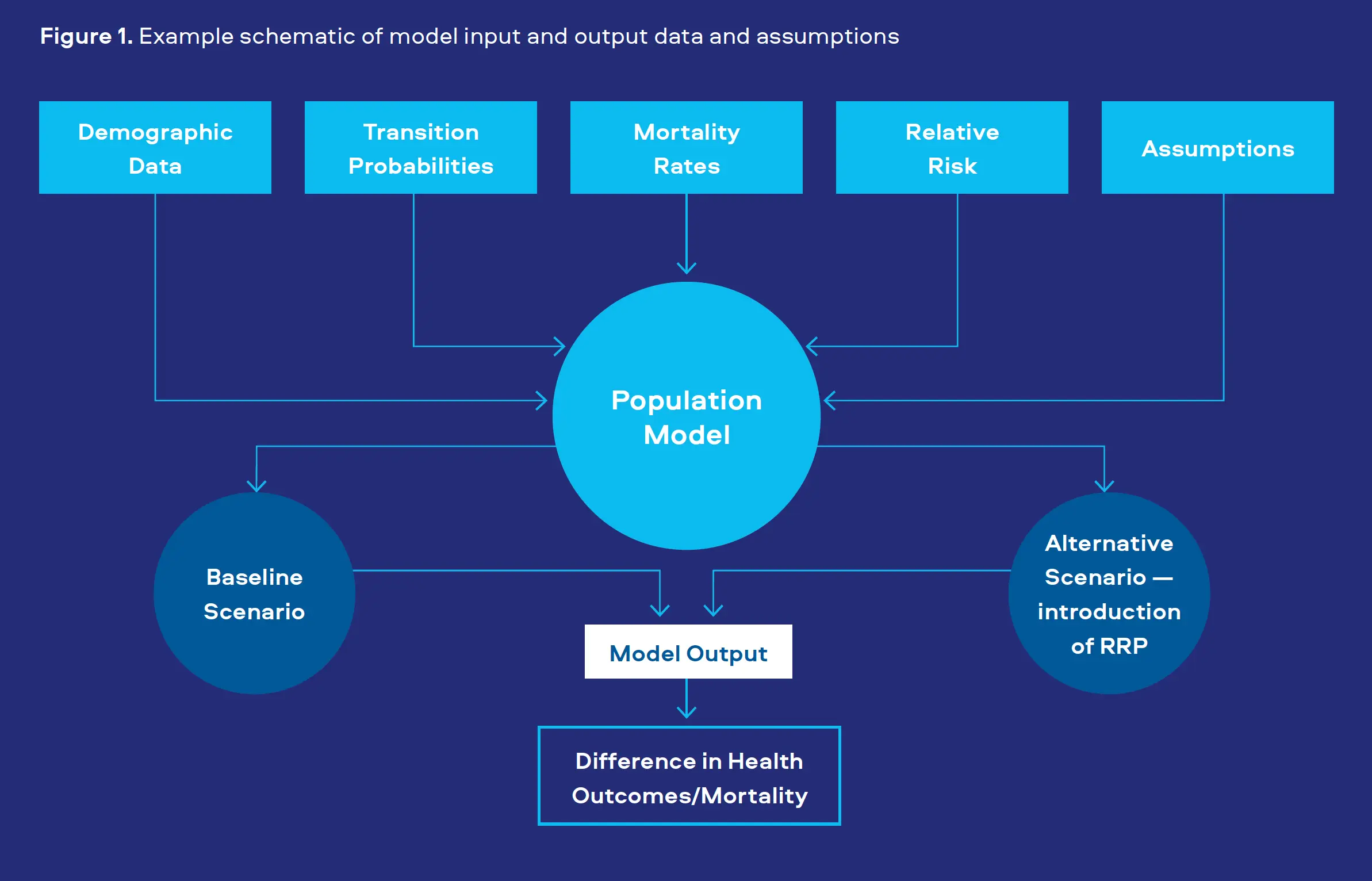Population and Risk Modelling

Lab- and clinic-based science allows us to better understand the lower risk profile of our Smokeless Products as compared to cigarettes. With population models, we can generate insights into the potential health impact our products may have on the population when they are introduced to a market.
The introduction of a new product to a market can be associated with varying product usage behaviours among adult consumers, leading to both positive and negative health effects. These behaviours need to be evaluated in totality to understand the population level health impact.
When a new Smokeless Product is introduced to the market, long-term observational data on use behaviour and health impact are not yet necessarily available. In the absence of these data, a need still exists to understand the potential population health impact. Computational models, which are commonly used in the fields of statistics, economics, and demography, can be developed and used to investigate the potential effect of new Smokeless Product introductions on consumer behaviour and population health.














